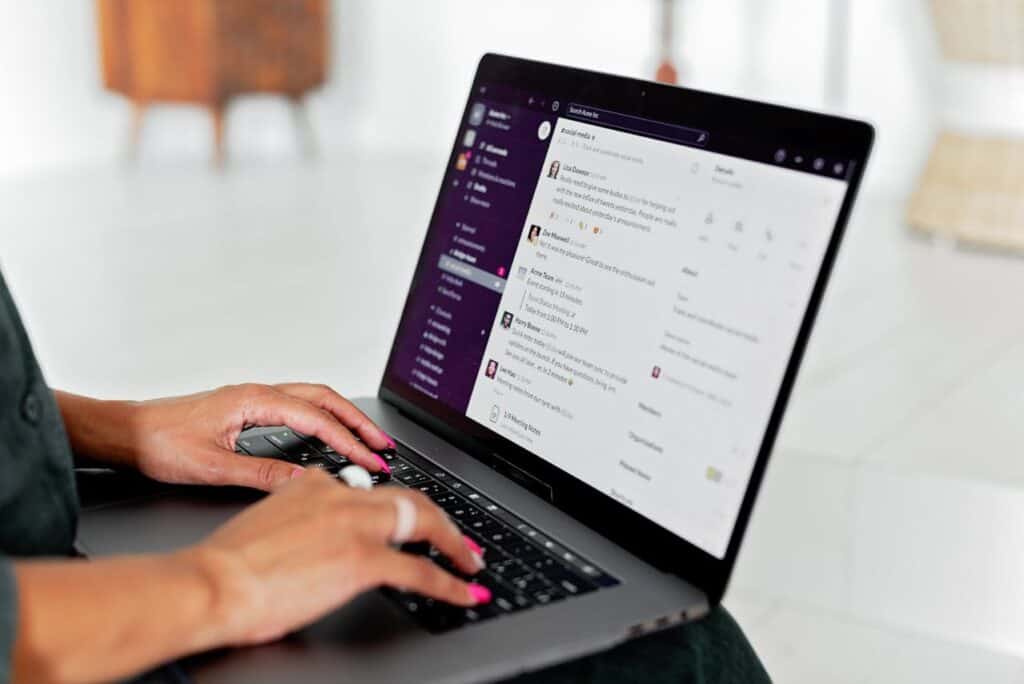The rise of remote work has transformed the traditional office environment in the United States, making virtual team building an essential aspect of maintaining productivity and employee morale. The shift to remote work began to accelerate even before the pandemic, with companies embracing flexible work arrangements to attract top talent and reduce overhead costs. However, the COVID-19 pandemic acted as a catalyst, pushing many organizations to adopt remote and hybrid models permanently.
As remote work becomes the new norm, employees and employers face challenges in maintaining a cohesive work culture, effective communication, and strong team dynamics. Without the regular in-person interactions that typically happen in a physical office, remote employees can experience isolation, miscommunication, and a disconnect from the broader organizational goals. These challenges can negatively impact team morale and, consequently, productivity.
To counter these issues, virtual team building has emerged as a crucial strategy for companies to foster team spirit, encourage collaboration, and boost employee engagement. Virtual team-building activities such as online games, virtual happy hours, and collaborative brainstorming sessions help create a sense of community despite physical distances. Additionally, utilizing remote collaboration tools like Slack, Zoom, and Microsoft Teams facilitates smoother communication and helps employees feel more connected and engaged.
Ultimately, investing in virtual team building and leveraging the right tools enables companies to sustain a positive work environment, enhance remote work morale, and ensure that remote teams remain motivated and productive.
Understanding the Challenges of Remote Team Morale
Remote teams face several unique challenges that can negatively impact team morale, such as communication gaps, isolation, and lack of engagement. One of the most prominent challenges is communication breakdown. Without the opportunity for face-to-face interactions, remote employees may struggle to convey their ideas clearly, leading to misunderstandings and reduced productivity. These communication issues can create a sense of disconnection among team members, resulting in less collaboration and diminished overall morale.
Isolation is another common concern. Remote employees often miss out on the social interactions that typically occur in a traditional office setting, such as casual conversations and spontaneous brainstorming sessions. This lack of social engagement can lead to feelings of loneliness and detachment from the team, further reducing motivation and enthusiasm for work.
Additionally, remote teams may experience a decline in engagement. When employees work independently for long periods, they may lose sight of the company’s goals and feel less invested in the team’s success. Without proper engagement strategies, team members can become disengaged, leading to lower productivity and morale.
Addressing these challenges is essential for maintaining a positive remote work environment. Virtual team-building activities, such as online workshops, virtual coffee breaks, and team challenges, can help bridge the communication gaps and foster a sense of connection. Utilizing remote collaboration tools like video conferencing platforms, project management software, and instant messaging apps can also facilitate better communication and engagement, ensuring that remote teams remain connected and motivated despite the physical distance.

Top Virtual Team Building Activities to Strengthen Team Bonds
Virtual team building is crucial for maintaining a strong sense of connection and collaboration among remote teams. There are various activities that can foster team spirit and enhance remote work morale. Here are some effective options:
1. Virtual Happy Hours: These casual online meetups allow team members to unwind and socialize outside of work-related discussions. Platforms like Zoom and Microsoft Teams can be used to host these sessions. To make them more engaging, consider incorporating themes such as virtual cocktail-making classes or trivia games.
2. Online Game Sessions: Games like “Virtual Pictionary,” “Sudoku Throw-down,” and “Jackbox Games” are popular options for virtual team building. They provide a fun way for employees to collaborate, compete, and share some laughs. For instance, Pictionary can be played using a shared whiteboard feature in Zoom, while Jackbox Games offers multiple interactive options for team engagement.
3. Creative Brainstorming Workshops: Virtual brainstorming sessions using collaboration tools like Miro or Google Jamboard can help teams generate new ideas and solve problems together. These sessions encourage creative thinking and provide an opportunity for team members to express their ideas and work together.
4. Virtual Coffee Chats and Lunch Dates: Setting up casual meetings like virtual coffee breaks or lunch dates through platforms like Donut (integrated with Slack) can foster deeper connections. These informal chats are perfect for discussing non-work topics and building rapport among team members.
Engaging in these activities not only strengthens team bonds but also improves communication and trust within remote teams. By leveraging remote collaboration tools and creative ideas, companies can ensure that their virtual teams remain connected and motivated despite the physical distance.
Implementing Strategies to Boost Remote Team Morale
Boosting remote team morale requires intentional strategies that prioritize communication, recognition, and employee well-being. One key approach is scheduling regular check-ins. These check-ins provide opportunities for team members to share their progress, discuss challenges, and receive feedback. They can be conducted both as group meetings and one-on-one sessions to ensure that everyone feels supported and heard. Regular touchpoints foster transparency and build trust, which are crucial for maintaining remote work morale.
Transparent communication is another essential strategy. Setting clear expectations for roles, responsibilities, and goals helps prevent misunderstandings and ensures that everyone is aligned. Encouraging team members to share their thoughts and feedback openly creates a positive and inclusive environment where employees feel valued and engaged. Using remote collaboration tools like Slack or Microsoft Teams can facilitate seamless communication and keep everyone connected, even when working from different locations.
Recognizing team achievements is also critical in a remote setting. Managers should take the time to acknowledge both individual and team accomplishments during virtual meetings or through shout-outs in team chat channels. Celebrating milestones, such as project completions or work anniversaries, through virtual events or personalized messages can significantly boost morale and reinforce a positive team culture.
Managers play a crucial role in setting a positive tone and encouraging participation in these initiatives. Demonstrating empathy and flexibility by being understanding of employees’ personal challenges, offering flexible working hours, and promoting a healthy work-life balance can make a substantial difference. By combining these strategies, companies can effectively support their remote employees, leading to a more motivated and cohesive team overall.

Leveraging Technology for Seamless Virtual Engagement
Technology plays a crucial role in virtual team building, enabling remote teams to stay connected and engaged. Tools like Kahoot, Mentimeter, and Zoom breakout rooms have become essential in fostering team collaboration and morale.
Kahoot is widely used for creating fun and interactive quizzes that can be played during virtual meetings. It encourages healthy competition and breaks the monotony of traditional meetings, making it a great tool for boosting remote work morale. Teams can use Kahoot to host trivia games or knowledge quizzes, promoting a sense of camaraderie among participants.
Mentimeter is another excellent tool that enhances engagement through interactive presentations, live polls, Q&A sessions, and word clouds. It’s especially useful for collecting real-time feedback, ensuring that every team member’s voice is heard. Mentimeter’s seamless integration with other platforms like Zoom or Microsoft Teams makes it easy to incorporate into existing virtual setups, ensuring smooth interaction.
Zoom breakout rooms offer an ideal solution for organizing smaller group discussions within larger meetings. Breakout rooms can be used for brainstorming sessions, team-building activities, or simply for informal conversations. Managers can rotate team members in and out of breakout rooms, allowing for diverse interactions and team bonding.
To make the most of these tools, consider integrating them into your team’s daily or weekly routines. Start meetings with a quick Kahoot quiz, use Mentimeter to gather feedback on ongoing projects, and utilize Zoom breakout rooms for regular team-building sessions. This approach will keep remote team morale high and encourage continuous engagement, even in a virtual environment.
Measuring the Impact of Virtual Team Building on Morale and Productivity
To measure the effectiveness of virtual team-building activities, organizations can use various strategies, such as surveys and feedback forms. These tools help gather direct insights into employee perceptions and engagement levels. Surveys can include questions related to job satisfaction, the effectiveness of virtual team-building events, and suggestions for improvement. Analyzing this data enables organizations to identify areas that need attention and track changes over time.
Key metrics to evaluate the impact of virtual team building include employee engagement, job satisfaction, and productivity levels. For example, the Employee Net Promoter Score (eNPS) measures how likely employees are to recommend their workplace to others, indicating overall satisfaction and loyalty. Similarly, tracking absenteeism and turnover rates provides a clear picture of engagement and morale.
Qualitative metrics, such as open-ended survey responses and focus group discussions, offer deeper insights into employee experiences. Companies like Google and Johnson & Johnson have leveraged innovative virtual team-building strategies, such as mindfulness exercises and adventure-based activities, to strengthen team bonds and enhance employee engagement.
Successful case studies from companies like Dynamic Events show that effective virtual team building can lead to improved communication, stronger collaboration, and higher productivity among remote teams. One such client, a global tech firm, reported increased team cohesion and engagement after implementing virtual team-building activities, demonstrating the long-term benefits of these initiatives.
Conclusion
Virtual team-building activities are essential for maintaining morale and productivity in remote teams. To sustain a positive virtual culture, organizations should continuously refine their strategies to meet evolving team needs. Regularly revisiting these efforts ensures that remote employees stay engaged, motivated, and connected despite physical distances.






